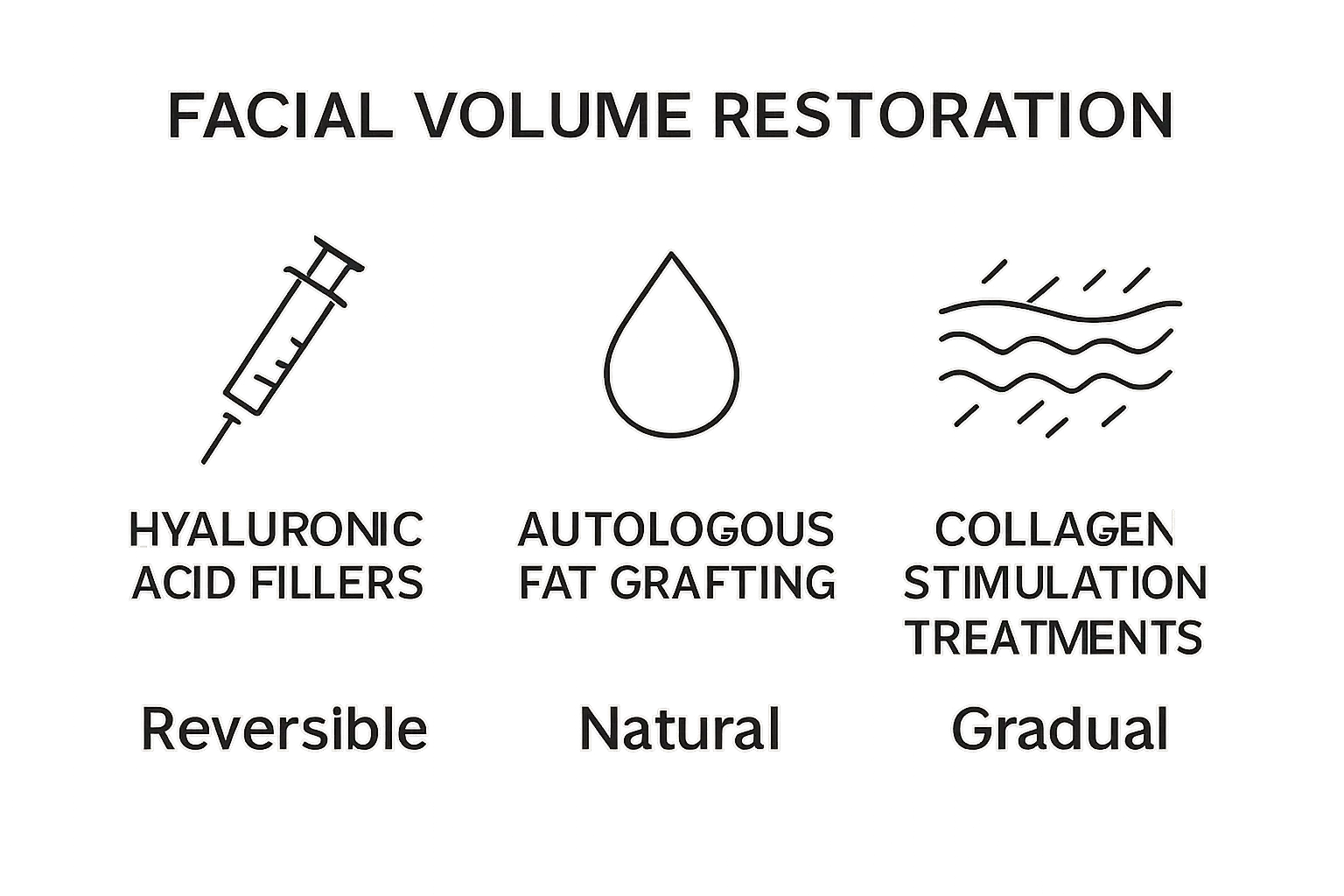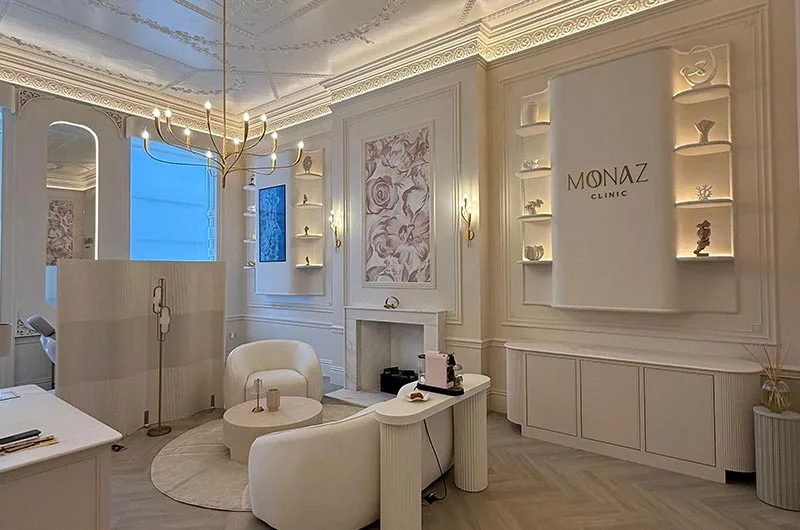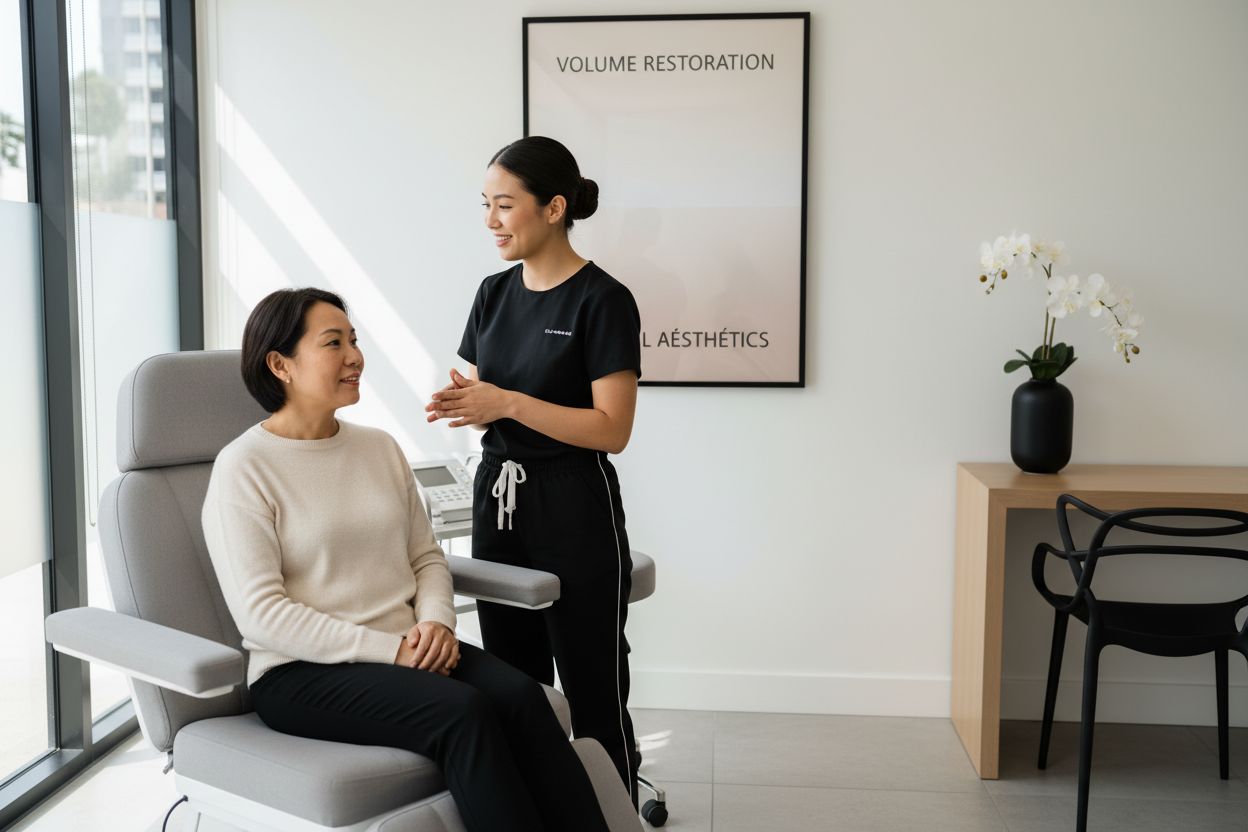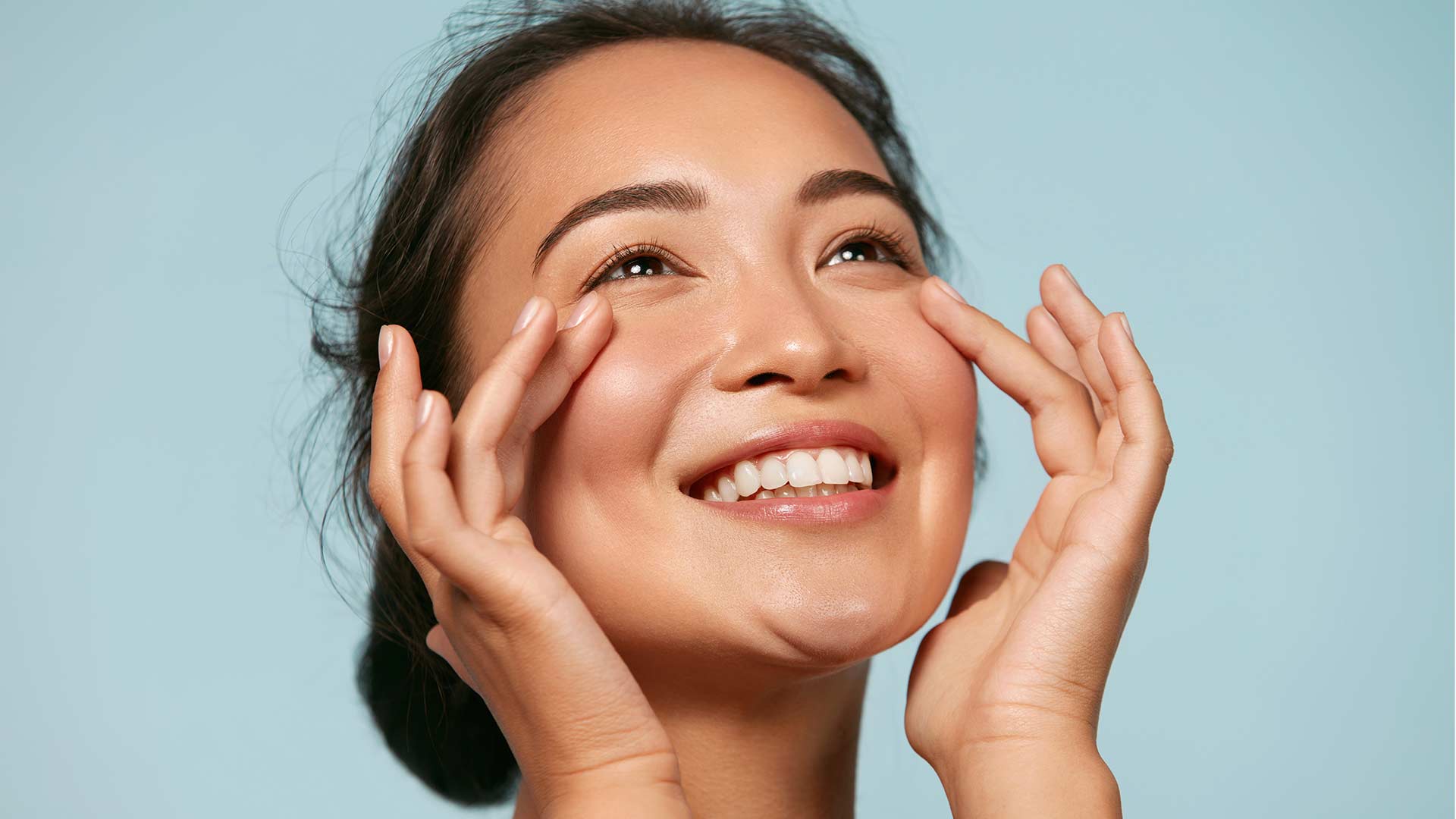Explore essential volume restoration tips for facial aesthetics, focusing on comprehensive understanding and importance in beauty treatments.
Facial ageing is more than just fine lines and wrinkles. The real secret behind a tired or sagging appearance is a gradual loss of facial volume. But few realise that by the age of 50, people can lose up to 20% of their facial fat, which completely reshapes their look. The real surprise is that modern volume restoration techniques do not just fill lost areas but can actually restore natural balance and harmony to the entire face.
Table of Contents
- What Is Volume Restoration In Facial Aesthetics?
- Why Volume Restoration Matters For Facial Balance
- How Volume Restoration Techniques Enhance Features
- Key Concepts Behind Volume Loss And Restoration
- The Role Of Techniques And Products In Volume Restoration
Quick Summary
| Takeaway | Explanation |
|---|---|
| Volume restoration counters aging | It replenishes lost facial volume, improving fullness and skin structure. |
| Techniques are tailored to individuals | Customised assessments ensure that treatments address unique facial anatomy and aesthetic goals. |
| Restoration enhances facial balance | Balanced facial features boost confidence and contribute to perceived youthfulness. |
| Gradual volume replacement is key | Subtle approaches create natural-looking results, mimicking the progression of aging. |
| Diverse products offer effective restoration | A range of fillers and techniques are utilised for targeted volume enhancement. |
What Is Volume Restoration in Facial Aesthetics?
Volume restoration represents a sophisticated aesthetic approach designed to counteract the natural aging process by replenishing lost facial volume and revitalising skin structure. As individuals age, facial tissues gradually lose their youthful fullness, leading to visible signs of volume depletion such as sagging skin, hollow cheeks, and diminished facial contours. Volume restoration techniques provide targeted interventions to address these age-related changes.
The Science Behind Volume Loss
Facial volume loss occurs through multiple interconnected biological mechanisms. Collagen and elastin production decreases with age, resulting in reduced skin elasticity and structural support. Fat compartments in the face gradually diminish, causing skin to appear thinner and less plump. Bone resorption also contributes to this process, altering facial skeletal architecture and creating a less defined facial profile.
Comprehensive Restoration Approaches
Volume restoration encompasses several advanced techniques tailored to individual aesthetic needs. These interventions aim to restore youthful facial proportions through precise, targeted treatments. Key approaches include:
The following table summarises key volume restoration techniques mentioned in the article, highlighting their main features and targeted outcomes for facial aesthetics.
| Technique | Key Features | Main Benefits |
|---|---|---|
| Injectable Dermal Fillers | Hyaluronic acid-based, instant effect, minimally invasive | Immediate volume restoration, natural look |
| Autologous Fat Grafting | Uses patient’s own fat cells, surgical procedure | Long-lasting fullness, natural integration |
| Collagen Stimulation Treatments | Gradual collagen induction, multiple sessions may be needed | Improves skin texture, subtle volume increase |

- Injectable Dermal Fillers: Hyaluronic acid-based solutions that instantly replenish lost volume
- Autologous Fat Grafting: Using patient’s own fat cells to restore facial fullness
- Collagen Stimulation Treatments: Therapies designed to naturally enhance the body’s collagen production
For those seeking comprehensive insights, our guide on facial volume loss provides deeper understanding of this transformative aesthetic approach.
Why Volume Restoration Matters for Facial Balance
Facial balance represents a delicate interplay of structural proportions, symmetry, and aesthetic harmony.
 Research demonstrates that volume restoration goes beyond mere cosmetic enhancement, playing a critical role in maintaining visual equilibrium and perceived youthfulness.
Research demonstrates that volume restoration goes beyond mere cosmetic enhancement, playing a critical role in maintaining visual equilibrium and perceived youthfulness.
The Aesthetic Mathematics of Facial Proportion
Facial balance is not subjective but rooted in mathematical principles of symmetry and proportion. As facial tissues lose volume, the delicate architectural framework becomes disrupted. Cheeks may appear hollow, jawlines less defined, and overall facial contours diminished. This gradual transformation can significantly impact an individual’s perceived age and aesthetic appeal.
Psychological and Emotional Impact
Volume restoration transcends physical transformation, addressing deeper psychological dimensions of self-perception. Balanced facial features contribute to enhanced confidence and emotional well-being. Individuals experiencing volume loss often report feelings of reduced self-esteem, making aesthetic interventions more than just cosmetic procedures.
Strategic Restoration Techniques
Achieving optimal facial balance requires precision and personalised approach.
Key considerations include:
- Customised Assessment: Detailed evaluation of individual facial structure
- Proportional Restoration: Gradual, natural-looking volume replacement
- Holistic Approach: Considering overall facial harmony, not isolated areas
For those interested in exploring nuanced facial contouring techniques, explore our comprehensive guide on facial contouring to understand the intricate art of aesthetic balance.
How Volume Restoration Techniques Enhance Features
Clinical research demonstrates that volume restoration techniques represent a sophisticated approach to facial enhancement, precisely targeting specific anatomical regions to revitalise and rejuvenate facial features. These advanced interventions go beyond superficial treatments, offering nuanced transformations that restore natural facial architecture.
Targeted Facial Enhancement Zones
Volume restoration focuses on key facial areas where age-related changes are most pronounced. Specific zones such as cheeks, temples, and nasolabial folds receive carefully calibrated treatments designed to replenish lost volume and restore youthful contours. By addressing these strategic regions, practitioners can create harmonious, balanced facial rejuvenation that appears both natural and elegant.
Precision Augmentation Strategies
Modern volume restoration employs highly specialised techniques that prioritise subtle, progressive enhancement. Practitioners utilise advanced injectable technologies and meticulous placement strategies to achieve optimal results. The goal is not dramatic transformation but refined, understated rejuvenation that maintains individual facial characteristics.
Comprehensive Feature Enhancement Considerations
Successful volume restoration encompasses multiple critical aspects:
- Anatomical Assessment: Detailed mapping of facial structure and volume loss
- Personalised Approach: Tailored interventions matching individual facial architecture
- Progressive Restoration: Gradual volume replacement mimicking natural facial aging
Explore our comprehensive dermal filler guide to understand the intricate techniques behind sophisticated facial rejuvenation.
Key Concepts Behind Volume Loss and Restoration
Understanding facial anatomy provides critical insights into the complex mechanisms of volume loss and restoration. The human face represents a sophisticated, multilayered structural system where multiple biological processes interact to determine overall appearance and ageing trajectory.
Physiological Foundations of Volume Degradation
Volume loss emerges through intricate biochemical and structural changes occurring at cellular and tissue levels. Collagen and elastin production declines progressively with age, reducing skin’s natural support framework. Concurrent reduction in fat compartments, diminished bone density, and decreased hydration contribute to the gradual transformation of facial architecture, leading to visible signs of volume depletion.
Multidimensional Factors Influencing Volume Loss
Beyond chronological ageing, several interconnected factors accelerate facial volume reduction. Genetic predisposition, hormonal changes, environmental exposures, lifestyle choices, and metabolic processes collectively impact the rate and extent of volume degradation. Factors such as prolonged sun exposure, smoking, nutritional deficiencies, and chronic stress can significantly expedite structural facial changes.
This table presents an overview of factors contributing to facial volume loss, illustrating the multidimensional nature discussed in the article.
| Factor | Contribution to Volume Loss |
|---|---|
| Ageing | Reduced collagen/elastin, fat compartment loss |
| Genetic Predisposition | Individual differences in tissue ageing |
| Hormonal Changes | Impacts facial fat and skin resilience |
| Environmental Exposure | Accelerates skin degradation (sun, pollution) |
| Lifestyle Choices | Smoking, poor nutrition hasten structure loss |
| Metabolic Processes | Affect fat and bone density over time |
| Chronic Stress | Influences overall tissue health and ageing |
Strategic Restoration Principles
Effective volume restoration requires a holistic, nuanced approach that acknowledges individual variations. Key principles include:
- Comprehensive Assessment: Detailed evaluation of individual facial anatomy
- Layered Intervention: Strategic product placement across different facial tissue depths
- Gradual Transformation: Natural-looking, progressive volume replenishment
Learn more about our personalised temple volume restoration approach to understand how targeted techniques can rejuvenate specific facial regions.
The Role of Techniques and Products in Volume Restoration
Advanced volume restoration techniques represent a sophisticated approach to facial rejuvenation, combining innovative technologies with precise medical expertise. These interventions are designed to address individual aesthetic requirements through carefully selected products and strategic application methods.
Product Diversity in Volume Restoration
The landscape of volume restoration products encompasses a wide range of sophisticated solutions. Hyaluronic acid fillers offer immediate volume enhancement with natural integration into facial tissues. Biostimulatory products like poly-L-lactic acid stimulate the body’s collagen production, providing gradual, long-lasting volumisation. Autologous fat transfer represents another powerful technique, utilising the patient’s own biological material for authentic rejuvenation.
Precision Application Techniques
Successful volume restoration demands exceptional technical skill and nuanced understanding of facial anatomy. Practitioners employ various injection techniques, including linear threading, fanning, and cross-hatching, to achieve optimal product distribution. The depth of product placement and the specific anatomical layer targeted are crucial factors in creating natural, harmonious results.
Personalised Treatment Strategies
Effective volume restoration requires a tailored approach that considers multiple factors:
- Comprehensive Facial Analysis: Detailed assessment of individual facial structure
- Product Selection: Matching specific products to unique aesthetic goals
- Staged Intervention: Gradual, measured approach to volume enhancement
Discover our comprehensive guide to understanding facial fillers to explore the intricate world of advanced aesthetic techniques.
Take Control of Facial Volume Restoration with Monaz Clinic Expertise
Understanding the science behind facial volume loss is the first step. If you feel frustrated by hollow cheeks, diminished contours, or a lack of facial balance, you are not alone. Many women struggle to restore youthful features while seeking natural-looking, expert-led results. Discover trusted guidance and actionable tips tailored to your needs on our facial aesthetics tips page, designed to help you make informed choices for your unique journey.

Ready to see what true personalised care feels like? Our experienced team at Monaz Clinic in Harley Street takes a thorough approach, combining medical expertise with an understanding of emotional well-being. Book your complimentary consultation today and experience non-surgical volume restoration that blends artistry with safety. Take the next step towards a balanced, rejuvenated appearance by scheduling your visit now.
Frequently Asked Questions
What is volume restoration in facial aesthetics?
Volume restoration in facial aesthetics is the process of replenishing lost facial volume to counteract the natural aging process, addressing issues such as sagging skin and hollow cheeks through various techniques like injectable fillers and fat grafting.
How do injectable dermal fillers work for volume restoration?
Injectable dermal fillers, particularly those made from hyaluronic acid, work by instantly adding volume to targeted areas of the face, restoring youthful contours and providing immediate results.
What factors contribute to facial volume loss as we age?
As we age, several factors contribute to facial volume loss, including decreased production of collagen and elastin, diminishing fat compartments, and bone resorption, all of which affect the structural integrity of the face.
How can I choose the right volume restoration technique for my needs?
Choosing the right volume restoration technique involves a customised assessment by a qualified practitioner, who will evaluate your facial structure and recommend options like dermal fillers, autologous fat grafting, or collagen stimulation based on your specific aesthetic goals.





